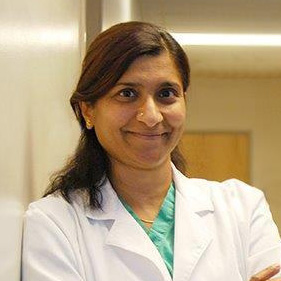UC Davis receives grant to develop and assess AI approach for atrial fibrillation risk modeling
Study aims to better predict people at risk for progression of AFib and those who will benefit most from specific treatments
Atrial fibrillation (AFib) is an irregular and often rapid heart rhythm, also known as an arrhythmia. AFib is the most common type of heart arrhythmia and predisposes patients to an increased risk of stroke. It has a significant global impact — affecting nearly 40 million individuals worldwide and over 6 million in the United States.
Current treatments include medications, risk factor modifications or invasive procedures like ablation. But these therapy options are limited to disease control and only moderately improve patient outcomes, with some patients benefitting more than others.
Fortunately, a group of researchers want to make life better for people with aFib.
The interdisciplinary multi-institutional team of physician scientists, cardiologists, computer scientists and data scientists from UC Davis, UC Davis Health and the University of Arizona seek to advance patient health through a new, extensive study aided by technology. Thanks to a $4 million, 5-year grant from the National Institutes of Health (NIH), the team will use artificial intelligence (AI) to better predict who is at risk for progression of AFib and who will benefit the most from specific treatments.
There is a significant need for a prediction model to identify the patients that will benefit the most from an ablation procedure and maximize the utilization of the therapy.”—Uma N. Srivatsa
Ablation procedure to treat AFib
One of the best tools cardiologists have for treating AFib is an ablation procedure. Ablation uses hot, cold or electrical energy to create tiny scars in heart tissue, targeting the areas of the heart causing the arrhythmia. Scarring in these areas helps to block the heart from producing irregular or abnormal rhythms.
Many studies in the management of AFib have shown ablation is more effective than medication to reduce the burden of the condition and control its symptoms.
However, not all patients benefit from ablation. Factors such as their age, timing of ablation in the course of the disease and the size of the left atrium can affect the procedure’s success. Beyond that, very little is known about who will improve with ablation.
“After two decades of investigations with varying methods of ablation, we have only marginally improved the clinical outcome of the procedure for patients,” said Uma N. Srivatsa, director of arrhythmia services for UC Davis Health and a principal investigator of the grant. “There is a significant need for a prediction model to identify the patients that will benefit the most from an ablation procedure and maximize the utilization of the therapy.”
Looking at biomarkers to predict future arrhythmias
While some investigations have looked into the cellular and molecular mechanisms contributing to AFib, there is still very little known about the underlying molecular mechanisms leading to the condition.
Metabolomics, proteomics and other “omics” technologies have only recently been applied to studies and have not been systematically investigated.
“Systems biology approaches, while still in their infancy, offer the promise of providing novel insights into pathways influencing AFib risk,” said principal investigator Nipavan Chiamvimonvat, professor and chair of the Department of Basic Medical Sciences at the University of Arizona and emeritus professor at UC Davis. “As part of this study, our objective is to identify patients who have increased risk of recurrence of AFib after ablation by looking at molecular observations from blood draws obtained pre-procedure.”
Systems biology approaches, while still in their infancy, offer the promise of providing novel insights into pathways influencing AFib risk.”—Nipavan Chiamvimonvat
Using artificial intelligence to make AFib risk models
The three primary researchers will take on different parts of the study.
Srivatsa will collect data from 300 patients experiencing AFib who are scheduled for an ablation procedure. The collection will include clinical data like their age and how much treatment they have received. It will also record intracardiac electrograms, the electrical signals from the left atrium that create a sort of 3D map of the heart.
Chiamvimonvat’s lab, meanwhile, will evaluate blood samples from patients.
The multiple types of information gathered by Srivatsa and Chiamvimonvat from the same patients (known as multimodal data) will then be given to Vladimir Filkov, professor of computer science at UC Davis and director of translational data science at the university’s DataLab. Filkov’s research team will develop novel multimodal AI models using generative AI and deep neural networks. The data will be also reconstructed in a virtual reality environment, custom built in DataLab, which brings a unique perspective to this investigation.
Using the multimodal approach of analyzing multiple types of data jointly to produce a single result allows the researchers to build better models of patient outcomes than the more typical analysis of a single data modality.
Filkov stresses that he is not just taking the data and processing it. Rather, he and his medical collaborators are in constant conversation about what data they need, how to put it together and how to use it in this study.
To benefit from AI, this project is a conversation between the physician scientists and the machine learning and AI experts.”—Vladimir Filkov
This is one of the first NIH-funded studies that relies on multimodality to improve outcomes for patients. While multimodal data has been touted for several years as a potentially great way to produce better models, it has been largely theoretical, particularly in the health care space.
“Using multimodality beyond theory and in practice has been a challenge,” Filkov acknowledged. “This is the step we overcame to make this study happen.”
Part of the uniqueness of this project, Filkov added, is how the machine learning thread is interwoven into the study’s tapestry from the beginning.
“To benefit from AI, this project is a conversation between the physician scientists and the machine learning/AI experts,” he said. “We depend on each other and create feedback; all the pieces are integrated. More importantly, the study is possible only through the collaborative efforts from multiple teams working together to solve the common problem.”
Srivatsa noted physician scientists and data scientists “speak different languages” yet collaborate and exchange ideas in a fun way. “It is like performing in an orchestra where we are in sync but unique at the same time,” she said.








